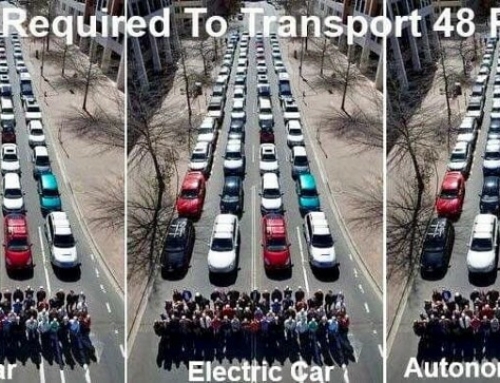To a car company, replacing the chrome wing mirror on an SUV with a carbon fibre one is a step towards sustainable transportation. To a radical ecologist, all motorised movement is unsustainable. So when is transportation sustainable, and when is it not?
Eric Britton, an expert on the subject, had the good idea of posting a text at Wikipedia which will evolve as a shared description, if not definition, of the concept.
In a new mobility discussion group Chris Bradshaw emphasizes that “light” transport systems are not, per se, sustainable – only less unsustainable than commuting by car. “Light rail supports far-flung suburbs, while street cars support, well, street-car suburbs” says Bradshaw; “likewise, a smaller, more efficient, or alternative-fuel vehicle is only less unsustainable than another private vehicle. It will still take as much space on the road and in parking lots, it will still threaten the life and limb of others, it will still create noise, and it still will require lots of energy and resources to manufacture, transport to a dealer, and dispose of when its life ends”.
It is an important part of sustainable transport and communities, says Bradshaw, to respect what he calls the scalar hierarchy, in which the trips taken most frequently are short enough to be made by walking (even if pulling a small cart), while the next more frequent trips require a bike or street car, and so on. “If one adheres to this then there are so few trips to be made by car that owning one is foolish”.




